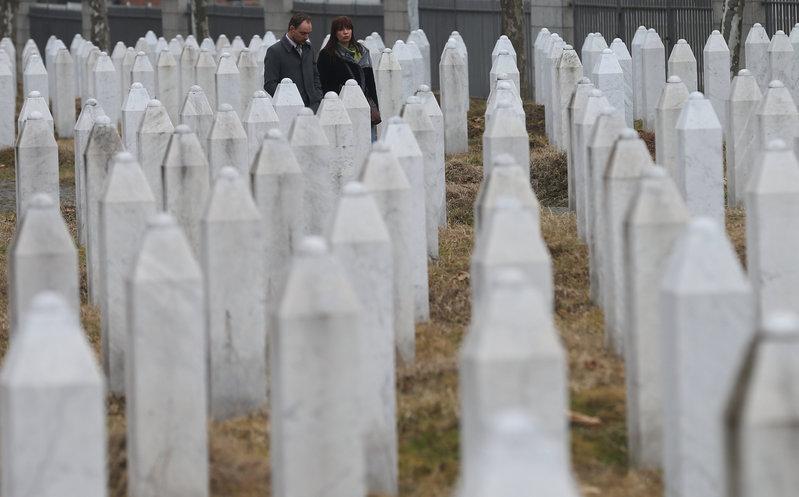
Former Dutch peacekeepers and bereaved Bosnian Muslims confronted painful memories on Thursday at the opening of a new permanent exhibition in Srebrenica, where Serb forces massacred more than 8,000 people in 1995.
SREBRENICA, Bosnia Former Dutch peacekeepers and bereaved Bosnian Muslims confronted painful memories on Thursday at the opening of a new permanent exhibition in Srebrenica, where Serb forces massacred more than 8,000 people in 1995.
The Dutch soldiers were meant to protect the local population, but they were lightly armed and had no orders to confront the Bosnian Serb army commanded by General Ratko Mladic.
They stood by as his forces overran the enclave, declared a ‘safe zone’ by the United Nations. They rounded up local men and boys, killed them and dumped their bodies in pits, in Europe’s worst atrocity since World War Two.
“It is emotional to be back,” said Gerry Kremer, a surgeon in the ‘DutchBat’ battalion, after paying his respects with a dozen other Dutch soldiers at a cemetery where the remains of over 6,300 victims have been buried so far.
“It’s high-level politics that decided to give away this enclave … but the price was very high. The price was a genocide of 8,500 people. Many soldiers suffered from trauma because the world pointed at them and said they didn’t do enough,” he said.
The exhibition, including reconstructed DutchBat headquarters, photographs and audio and video footage, will be displayed permanently in the former U.N. compound in Potocari, near Srebrenica, which has been turned into a memorial center.
“This is the most difficult project that I have ever worked on because it shows how difficult it is to face the truth,” said Hasan Nuhanovic, who won a lawsuit against the Dutch government for failing to protect his family while he was working as an U.N. interpreter.
His parents and brother were killed by the Serb forces after the Dutch soldiers had refused to provide them with shelter.
Among more than 500 photographs on display, there are images of women and children being separated from their menfolk in Potocari in the prelude to the massacre. Others show the first burials of the victims, most of whom were unearthed from hundreds of mass graves scattered across eastern Bosnia.
The 1992-95 Bosnian war, in which at least 100,000 people were killed, was the bloodiest of a series of conflicts that accompanied the break-up of Yugoslavia in the 1990s.
Hatidza Mehmedovic, who lost her husband and two sons in the massacre, told Reuters:” This is very emotional, but important as a reminder and warning to future generations that nobody should die just because he is different.”
(Writing by Daria Sito-Sucic- Editing by Mark Trevelyan)
 0 comments
0 comments





